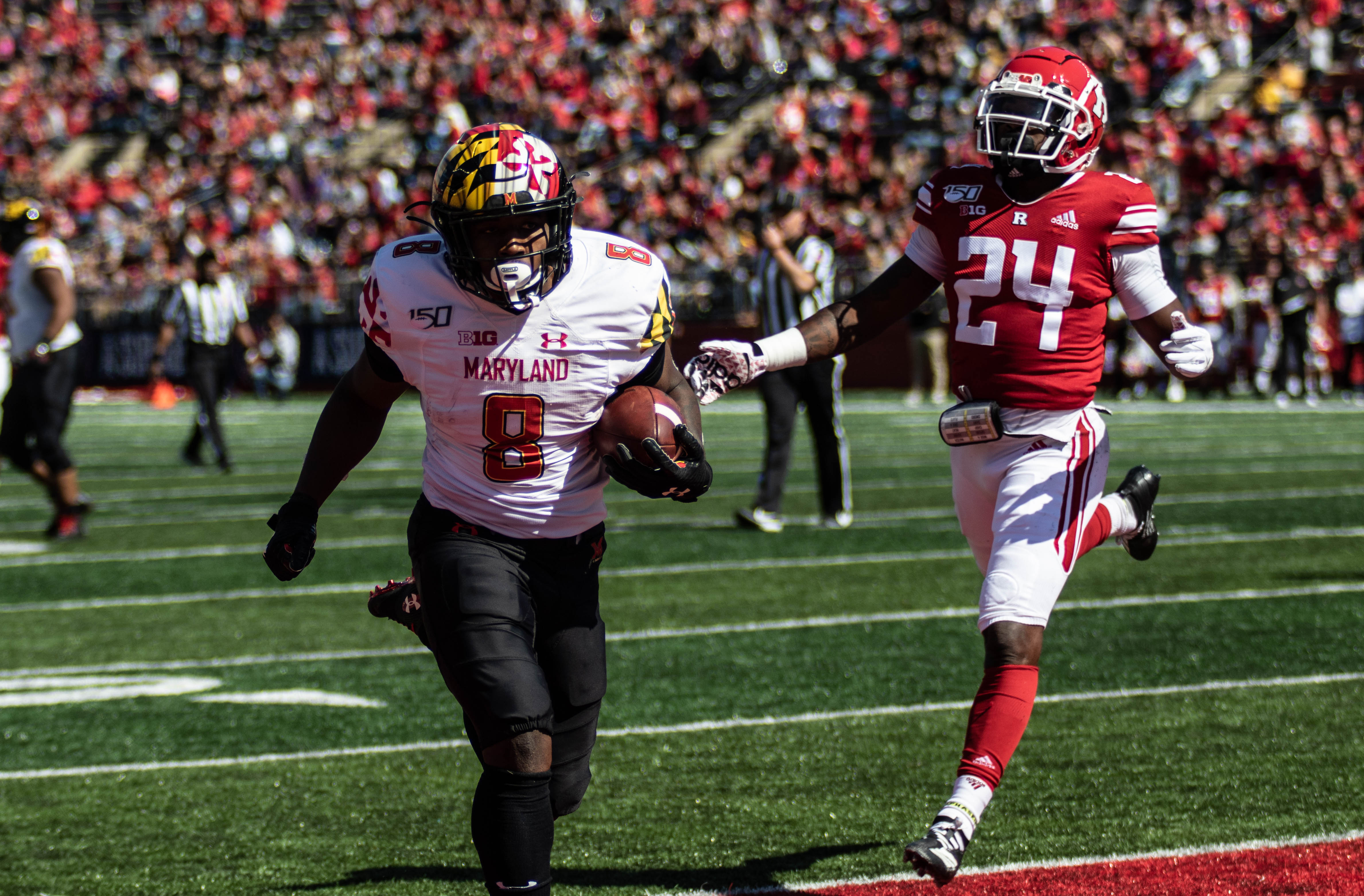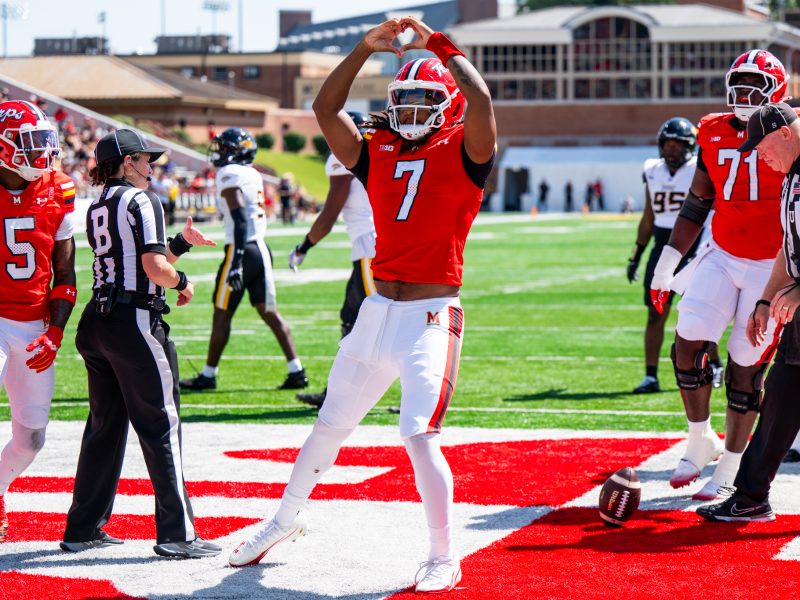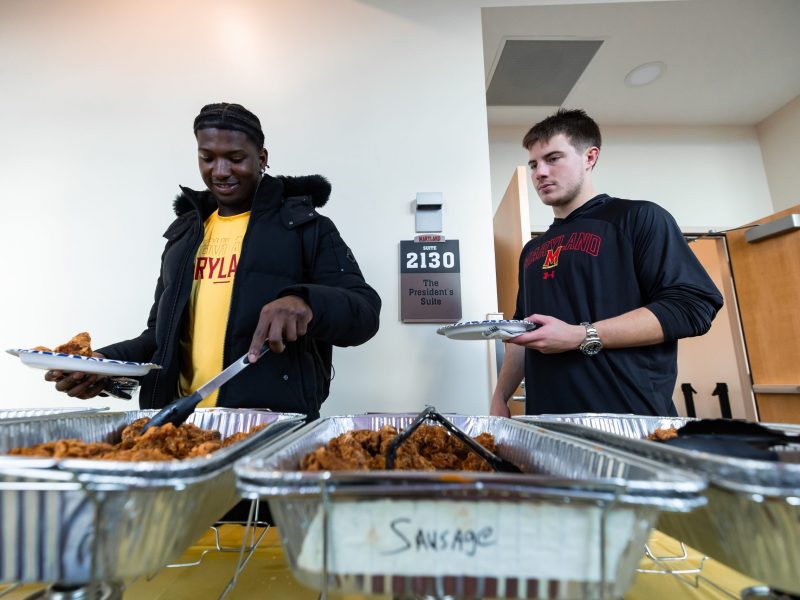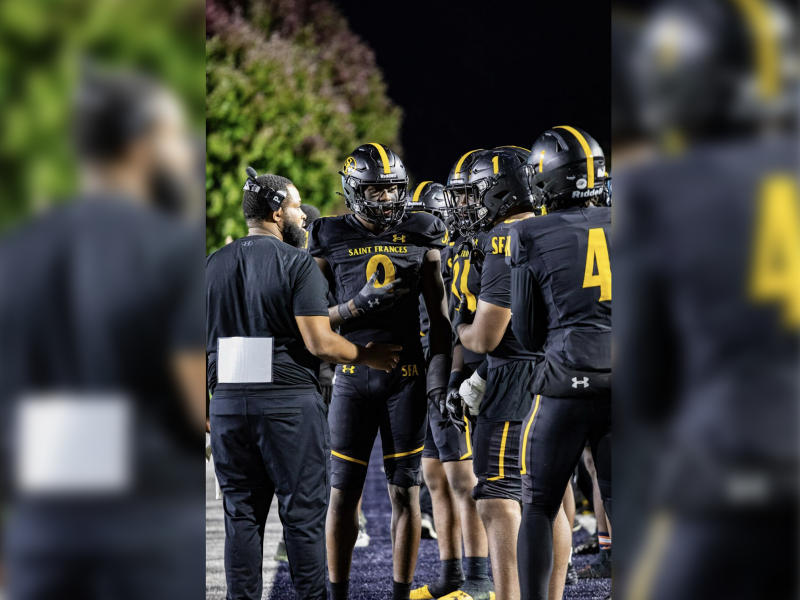PISCATAWAY, N.J. — After a 41-point victory with big plays coming left, right and center, it’s almost a moot point to dwell on the shortcomings of Maryland football’s offense — the one that produced two 80-yard touchdowns Saturday against Rutgers.
But there were faults, nestled neatly beside Dontay Demus’ first-play scamper to the end zone and Anthony McFarland’s breakaway speed down the sideline. The Terps manufactured six offensive drives that ended in touchdowns. They also stumbled to seven three-and-outs, stalling drives that went backward as frequently as they went forward.
In a 48-7 victory over the Scarlet Knights, a team with an interim head coach and little tape to reveal how it would operate under new leadership, the boom-or-bust offense sufficed. The booms outweighed the busts on the scoreline.
However, the Terps will face more difficult tests than Rutgers down the road. So while the team certainly won’t shy away from chunk yardage, Maryland will aim to find a more stable offensive output instead of relying on big plays as the Big Ten slate picks up pace.
“I would’ve liked to see us … not be so, as I like to call it, big-little,” coach Mike Locksley said, “where we would hit explosive plays but then have series of three-and-outs. So we just need to be a little bit more consistent.”
[Read more: Explosive plays carry Maryland football to 48-7 blowout win over Rutgers]
Early in 2019, the Terps hadn’t displayed a propensity for home-run plays. Their offense got nothing going against Penn State last week and managed little against Temple. Even when trouncing Howard and Syracuse in the first two games of the season, Maryland for the most part moved the ball efficiently, chewing clock and racking up yardage.
Four times on Saturday, though, the Terps scored on the first play of a drive — not including running back Javon Leake’s kickoff return touchdown to open the second half.
Demus caught a quick slant from quarterback Josh Jackson and ran 80 yards on Maryland’s first play. Leake took eight seconds to run 42 yards to the house in the second quarter and McFarland took just three seconds to punch the ball in from 2 yards out after an interception. McFarland also found daylight midway through the third quarter, adding onto the onslaught.
“If we do our job, that’s how our offense is built, for these big plays,” offensive lineman Ellis McKennie said. “A lot of those weren’t even designed big plays. They were just runs that busted. We put a hat on everybody. We have tremendous backs — [McFarland], [Leake] and [Tayon Fleet-Davis] are ridiculous. Get them in open space, and they’re going to score.”
[Read more: Maryland football quarterback Josh Jackson exits vs. Rutgers with apparent ankle injury]
There’s nothing wrong with an ability to make big plays, and a comfortable victory showed why. But last season, when the Terps were so dependent on big plays, the trait periodically backfired against marquee foes.
In a loss to Michigan, nine of Maryland’s 10 drives ended after six plays or fewer. The first half expired on one, two resulted in touchdowns, one ended with an interception and six capped with Wade Lees punting the ball away. In a shutout loss against Iowa, the Terps had 10 drives with none longer than an eight-play, 28-yard possession.
But when big plays don’t appear, there can be big losses. But the team feels this season’s offense can prove different.
“If we execute, we can get it done against anybody,” McKennie said. “It may not be an 80-yard run. It may be going for 20, it may be going for 6.”
Against Rutgers, Maryland managed to convert four of its 13 third downs, a rate comparable to struggles in the same area against both the Nittany Lions and the Owls.
Too frequently — particularly early, when the Terps were still adjusting to how the Scarlet Knights looked — the offense faced third-down distances of at least 7 yards. Six of their seven three-and-outs occurred in those situations.
“We just need to be more consistent on first down, putting ourselves in better situations on second down. And if we put ourselves in a better situation on second downs, then third down can be better,” quarterback Tyrrell Pigrome said. “If we can get 3-to-4 yards on first down, that’s great, you know what I’m saying?”
So as Maryland looks to improve its offensive consistency, especially as conference play gears up, creating third-and-manageable situations can help to prolong drives. But with a track record of producing big plays on display once again in a lopsided win over Rutgers, the Terps won’t turn up their noses at green grass opening in front of them.
“Something coach preaches a lot is, ‘You never know what play is the play,” McKennie said. “You have to play every play like it’s the most important play of the game.”



